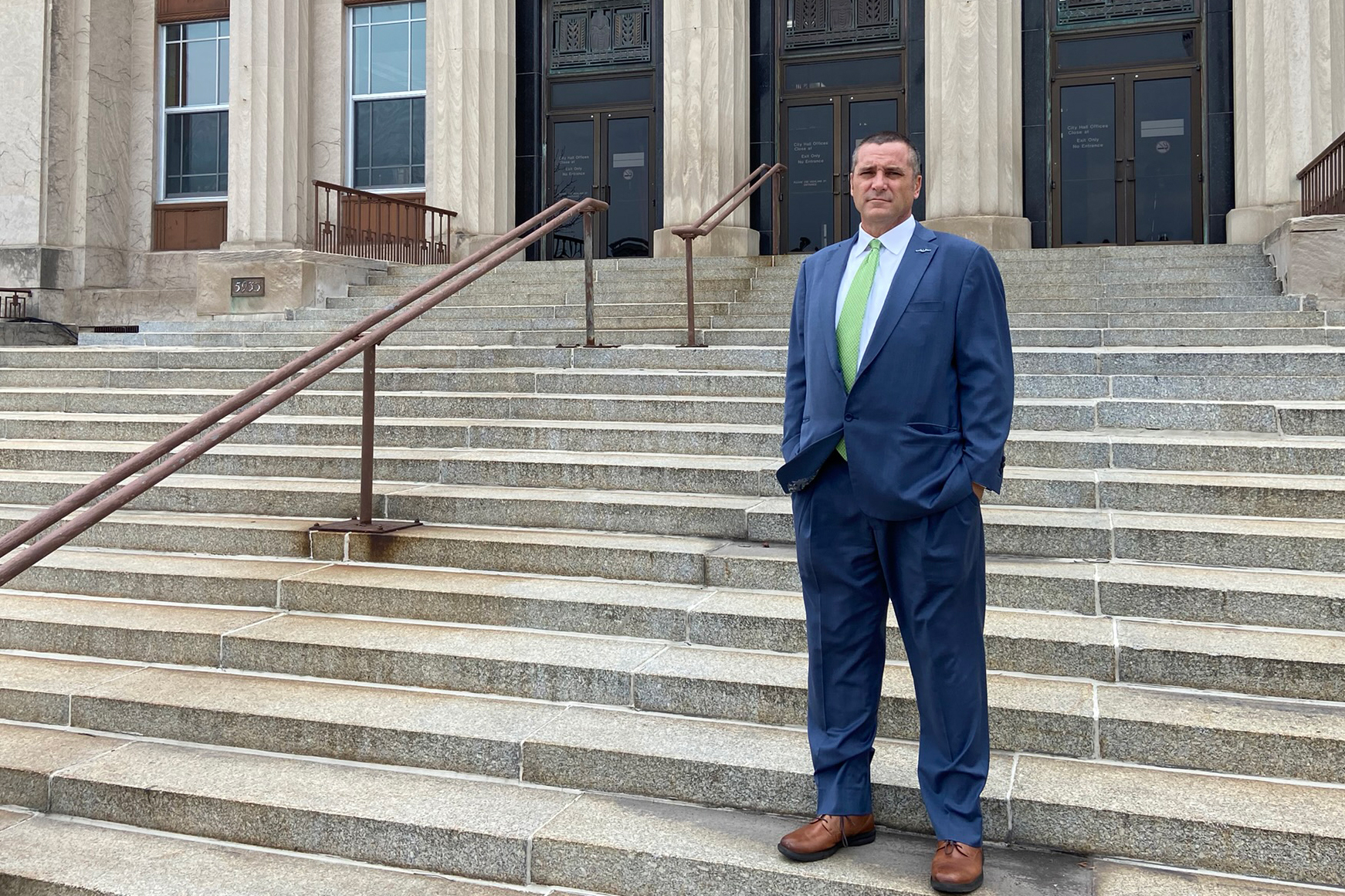HAMMOND, Ind. — In 1898, a few nuns took a prepare to this metropolis alongside the south shore of Lake Michigan to begin a medical center.
They converted an old farmhouse into a seven-bed medical middle. They treated their to start with affected person for a damaged leg amid carpenters hammering nails. Surgeons laid their individuals on a kitchen area table for functions.
The healthcare facility — then named immediately after St. Margaret, recognized for her support to the weak — ultimately grew to become one particular of the major in the spot. Hundreds of thousands of Indiana and Illinois citizens took their 1st, or past, breaths there.
A hundred twenty-four many years later, the medical center has, in a sense, appear comprehensive circle. This spring, Franciscan Alliance, the nonprofit owner — continue to affiliated with the similar Catholic order of sisters — plans to demolish most of the 226-mattress Franciscan Wellbeing Hammond elaborate, leaving only eight beds, an emergency division, and outpatient companies. The shift expense 83 positions at the clinic and 110 more at a lengthy-term acute-care middle that rented house there.
The information stung many in this Rust Belt town of approximately 80,000 people today, who have watched organizations — and neighbors — flee Hammond for decades. It is in particular painful, they say, since the clinic system has devoted a lot more than 50 percent a billion pounds in current yrs to new amenities in wealthier, a lot less-varied communities.
“It’s deplorable that a Catholic establishment like the Franciscans would make a monetarily inspired final decision and go away thousands of persons potentially at risk,” reported Mayor Thomas McDermott Jr., who complained that he was educated of the downsizing barely two hours ahead of it was introduced publicly. “I’m not attempting to be alarmist, but people today are gonna die because of this selection. And they know it.”

But the much larger dilemma is regardless of whether Hammond requirements a healthcare facility with hundreds of beds, presented the shifts in clinical apply and transportation in the 21st century. Only 50 to 60 of its beds are total on most times, reported healthcare facility CEO Patrick Maloney. Another Franciscan Alliance clinic is only 6 miles away. A lot additional care these days is being sent on an outpatient or digital foundation than even five a long time back.
And the Hammond site has experienced high-quality considerations. It costs only a person out of five stars on Medicare.gov, the most affordable probable score and worst of any of the nine rated hospitals in its county.
“Stewardship of our sources is one particular of the factors of our Catholic mission,” Maloney mentioned in an e-mail. “Key to that is economical supply of care.”
He famous that Franciscan is investing $45 million to rework the campus and will go on to operate a health care clinic there for uninsured or underinsured people, as very well as solutions like imaging, a medical lab, and prenatal care.
Whilst rural healthcare facility closures typically get extra notice, cities like Hammond have also been vulnerable to shedding clinical services, as wellbeing systems regulate to alterations in care, and decide to devote in areas the place additional people have private insurance policy. But the shutdowns increase inquiries about the switching mission of nonprofit hospitals — and whom they enable.
Considering that the 1930s, the urban hospitals most very likely to shut are those serving small-income, minority populations, in accordance to exploration by Alan Sager, professor at the Boston University School of Public Well being. He calls big swaths of Detroit and New York City “medical wastelands.”
When the town healthcare facility in Hartford, Connecticut, contracted in the 1970s, it retained its crisis area working — until eventually that received as well pricey, Sager claimed. “I forecast, in a decade, even with the finest intentions of all people concerned, it will prove financially unsustainable to aid an 8-bed medical center in addition ER in Hammond,” he reported.
Hammond’s inhabitants is down about a 3rd from its peak in the mid-20th century. Like other previous manufacturing hubs in the Midwest and Northeast, the town has been hollowed out by deindustrialization and white flight to suburban parts. It is in the part of Indiana, affectionately identified as “the Location,” which is primarily an extension of south Chicago, crisscrossed with freight train tracks, dissected by interstates, littered with factories in several states of decay.
On a new overcast morning, Franciscan Wellness Hammond’s parking garage and bordering heaps were being mostly empty. A sprinkling of people trickled out of the medical center. A signal recommended that birthing expert services had moved to the suburbs.
The ZIP code that covers the healthcare facility and its bordering community has a poverty price of 36%, with a median household money of $30,400. Its inhabitants is 82% Black and/or Latino. The hospital treats a massive share of sufferers on Medicaid, the authorities insurance coverage program for very low-money people, which normally pays well being treatment companies a lessen price than Medicare or non-public insurance.
For Franciscan Alliance, the driving elements in shrinking Franciscan Overall health Hammond ended up the expenses expected to sustain the aging infrastructure, and fewer desire for treatment predicted in that portion of “the Area,” Maloney explained.
He stated Hammond inhabitants are welcome at Franciscan Alliance’s hospital 6 miles absent in Munster, Indiana. The corporation has put in at least $133 million in modern several years on that facility, found in a wealthier suburb only a couple of blocks from a greater, competing medical center.
But for Carlotta Blake-King, a Hammond college board trustee, that’s not shut sufficient, in particular considering the fact that the space doesn’t have substantially mass transit. “I’m a senior citizen. I really don’t like to travel,” she mentioned. “Everybody simply cannot manage a car.”

Totally free transportation to health care appointments, though, is offered through the state’s Medicaid method and area township trustee business office.
Franciscan Alliance has changed older hospitals in other communities, albeit a handful of miles from their initial areas, investing $333 million on a new healthcare heart in Crown Level, Indiana, and $243 million in Michigan City, Indiana. In 2018, on the other hand, it shuttered a century-old clinic in Chicago Heights, Illinois, a working-course Chicago suburb demographically identical to Hammond.
The missions of numerous nonprofit healthcare facility chains like Franciscan Alliance have progressed. Close to the flip of the 20th century, hospitals generally intentionally established up store in much less-lucky neighborhoods, with community associates delivering time, cash, and supplies. When St. Margaret opened, for illustration, local farmers donated foodstuff. The Internal Profits Service exempted so-called charity hospitals from paying out taxes.
Right now, “hospitals are operating as corporations, as moneymaking small business entities, and their decisions are mainly driven by monetary fears,” reported Ge Bai, a professor of accounting and health coverage at Johns Hopkins University. “The line among the current nonprofit hospitals and for-revenue hospitals is incredibly, pretty murky.”
In 2018, nonprofit hospitals provided a lot less unreimbursed Medicaid and charity care than their for-financial gain counterparts, Bai’s investigation identified. Even so, she famous, Franciscan Alliance put in a lot more than the average nonprofit on both equally fronts.
Pat Vosti, a retired nurse from Hammond, labored in the cardiology device, so she is aware how time is of the essence in overall health treatment. She’s worried about clients who have to be diverted to other hospitals. “It’s a subject of minutes, but minutes rely in some instances, you know?” she mentioned.
Even so, people have been bypassing the Hammond clinic for several years. Alongside with its sister campus in Dyer, Indiana, it has only a 15% market place share, in accordance to a 2016 bond filing, as opposed with 45% for Franciscan’s Michigan Town facility and 38% for Crown Level.
“Now, why they have not been working with it could be a function of administration alternatives built 15, 20 years back: ‘Don’t make that new ER, really do not recruit individuals younger medical practitioners, do not open up a provider for material abuse,’” reported Nancy Kane, an adjunct professor at the Harvard T.H. Chan Faculty of Community Wellness. “This is ordinarily a gradual loss of life. These destinations really don’t out of the blue go poor.”







